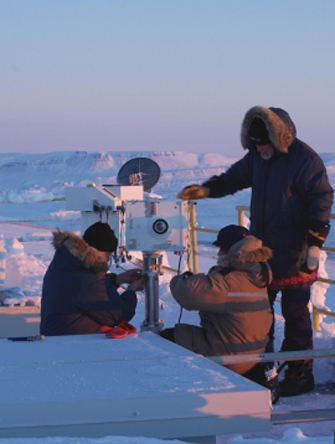
As many of us head to warmer places this March break to escape a brutal winter, two researchers from York University have camped out just 1,100 kilometres from the North Pole. They are part of an eight-member team of university researchers from Southern Ontario on a month-long atmospheric research and data collection trip to the Arctic region.
“The temperature is in the -50 C range here and our measurement campaign will continue until near the end of March,” says Professor Tom McElroy, of the Department of Earth and Space Science and Engineering at York U. “This annual collection of data makes a significant contribution to ozone and climate science as well as air pollution research.”
Ever since the Canadian Space Agency’s SCISAT-1 satellite was launched in August of 2003, scientists like McElroy and his graduate student Zahra Vaziri have made the high Arctic trek in support of the Atmospheric Chemistry Experiment (ACE) on SCISAT.
The validation team collects data from the remote Eureka weather station on Ellesmere Island (80 N) in Nunavut, to observe performance of the ACE instruments installed on the satellite.
The team has deployed two instruments, identical to those on SCISAT to compare and ensure the satellite is providing accurate data. One instrument is a Fourier Transform Spectrometer that measures sunlight in the infrared and the other is MAESTRO (Measurement of Aerosol Extinction in the Stratosphere and Troposphere Retrieved by Occultation). McElroy is the principal investigator of MAESTRO, which measures sunlight in the UV, visible and near infrared.

“The long-term data set being assembled by the ACE team − both the space data and the ground-based observations − are essential for assessing the significance of changes in the high-latitude atmosphere,” says McElroy, noting that the first appearance of an Arctic ozone “hole” in 2011 may be the harbinger of climate change effects in the polar upper atmosphere.
The researchers make solar measurements throughout the day after sunrise February 20, at the Polar Environment Atmospheric Research Laboratory (PEARL) near Eureka. The February-March period is chosen for this annual expedition, because that is when ACE makes measurements nearly overhead Eureka, making the comparison more precise. It is also to make measurements under conditions where the chemistry can be atypical.


